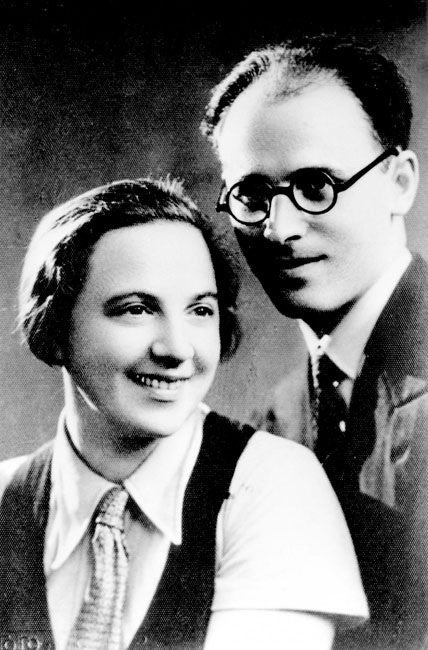Luba Bielicka Blum
Luba Bielicka Blum was born in Vilna in 1906, the eldest child of a poor, traditional family of ten. Luba’s thirst for knowledge led her to enroll in the newly established Jewish gymnasium in the city. There she met her future husband Avraham (Abrasza) Blum, who was an activist for the Bund in Warsaw. The couple both became members of Zukunft, the youth movement of the Bund. After finishing their studies, while Abrasza traveled to Gent, Belgium, where he studied structural engineering, Luba enrolled in nursing school in Warsaw. Abrasza completed his engineering studies in Belgium, and the couple was reunited in Warsaw, where they married. The couple had two children, Wiktoria (b. 1932), and Alexander (b.1936). Trained as a nurse, Luba worked in the nursing school, becoming the assistant director as well as overseeing the social work training of the nurses.
When the war broke out in September 1939, due to the nursing school director’s absence, Luba assumed the role of director of the school. While many leaders of the Bund chose to flee from the Germans towards Russia, Luba and Abrasza decided to remain in Warsaw, continuing to oversee the functioning of the school and the Bund despite the hardships entailed. With the establishment of the Warsaw Ghetto, the nursing school was eventually forced to relocate within the walls of the ghetto, in whose halls Luba lived with Wiktoria and Alexander. Luba managed to obtain official permission to continue operating the nursing school in the ghetto, and the nursing students, in addition to participating in their formal classes, also worked in the hospitals of the ghetto. During the mass deportations of the summer of 1942, the students in the school, along with Luba’s children, were taken to the Umschlagplatz for deportation. Luba managed to have some of the students released because of the protective papers they had been issued as students in the nursing school. She was also able to smuggle out her children in an ambulance before deportation. Hoping to remain in the ghetto even after the mass deportations, Luba’s hopes were shattered when the Germans murdered the patients in the hospital along with the nurses and doctors attending to them. During the aktion she managed to hide in a cellar along with her children and a few other nurses. Due to her connections with Polish nurses and members of the Communist Party, she was able to smuggle her children along with other children out of the ghetto. Luba fled the ghetto before the Uprising erupted, but Abrasza remained as one of the Bundist leaders of the Uprising. After the Uprising he was caught in Warsaw and subsequently murdered. Luba managed to survive in hiding under false papers along with Wiktoria, while Alexander lived with a Polish family in Warsaw under a false identity. Returning to the suburbs of Warsaw in 1944, Luba and Wiktoria were liberated by the Russians liberated in the fall of 1944. Afterwards, they were reunited with Alexander.
In March 1945, the Central Committee of Jews in Poland took over responsibility for the children’s home in Otwock, and appointed Luba as director. Working with a dedicated staff and receiving financial support from the Joint Distribution Committee, the children’s home provided a warm atmosphere for the children. When the home was closed in 1949, Luba returned to Warsaw, where she reestablished the nursing school. Luba received many awards for her dedicated work as a nurse and school administrator, including the prestigious Florence Nightingale Medal for her activities during the war under the Nazi oppression. Luba passed away in Warsaw in 1973.
